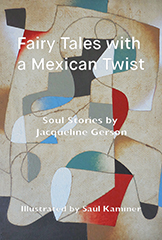

From
Advent and Psychic Birth by
Mariann Burke
Meister Eckhart in a Christmas sermon paraphrasing St. Augustine says of Christ's birth, "This birth is always happening. And yet, if it does not occur in me, how could it help me? Everything depends on that."(1) The thesis of this book is that our own psychological "birth" is related to the "birth" of God within us, and that this birth is "always happening." The paradox is that we long for this birth and yet we fear it. For centuries our unconscious fears and longing have been mirrored and "contained" in the religious dogma and symbolism of the church, a channel to the riverbed of the unconscious. But in a church and a culture that generally devalues the feminine realm--earth, the body, sexuality, instinct--these energies flow back into the psyche. Today the longing for consciousness and the integration of these energies have led many to leave the church which, they feel, no longer speaks to their needs. Others find spiritual fulfillment in a strong adherence to traditional doctrinal and Biblical interpretation. Still others, in increasing numbers, find that a more personal inner journey leads not only to greater self-awareness, but also to a richer appreciation of their religious heritage.
My approach throughout
Advent and Psychic Birth is to try to make connections between the archetypal images and personal experience, in both ancient and modern modalities, through associations, amplifications and clinical material. In one sense this approach has evolved out of my training in analytical psychology. Yet it has become deeply personal and flows out of my own felt sense of the Advent imagery and my own journey toward psychic birth. Far from diminishing my faith in Christ, it has broadened and deepened my understanding of the meaning of incarnation. Jung writes: "The efficacy of dogma by no means rests on Christ's unique historical reality but on its own symbolic nature, by virtue of which it expresses a more or less ubiquitous psychological assumption quite independent of the existence of any dogma."(2) On first reading these words we may feel that Jung is undermining dogma and Christ's mission on earth, yet our own experience as it relates to the underlying pattern of dogma, can only serve to enrich its meaning. "In religious matters ... we cannot understand a thing until we have experienced it inwardly ... for it is in this experience that the connection between the psyche and the outward image or creed is revealed .... "(3)
For each of us the image that speaks to us differs. For some it is an image from the Bible or from another religious tradition, while for others it is a dream image, or an image that seems to surface directly from the body. Each of these can be received as "messages " from God.
If we look at the biblical poetry of Advent in a more personal way, we find that while it belongs to the Hebrew and Christian scriptures, it transcends both. Beginning in darkness and destruction and ending in light and rebirth, Advent imagery represents a mythic or archetypal pattern. The Advent call to awaken from sleep is a call to follow the way of consciousness, to search for the inestimable gift, the treasure of the "hidden" self as well as the
Imago Dei which carries the power to revitalize us both as individuals and communities. Symbolically, the four Sundays of Advent remind us of the quarternity and of wholeness, as does the familiar Advent wreath with its four candles, one lighted each week suggesting the gradual dissipation of inner and outer darkness. During the first three weeks of the Advent liturgy, the tone is decidedly one of action and movement, beginning with the Baptist's call to prepare a way. With the desert "transition" the tone changes, and during the fourth week the Virgin appears, strong, questioning, willing to trust in the unknown. As in any religious initiation we are led to participate in a new dimension of life. Here, if we can contact our own "virgin energies," we listen as the angel speaks and we, in silence, like Mary, wait as the earth "buds forth a savior."





